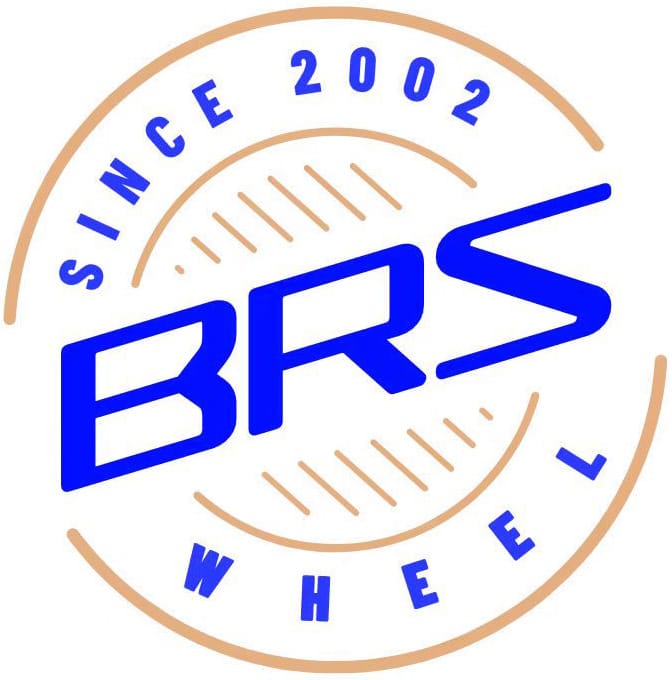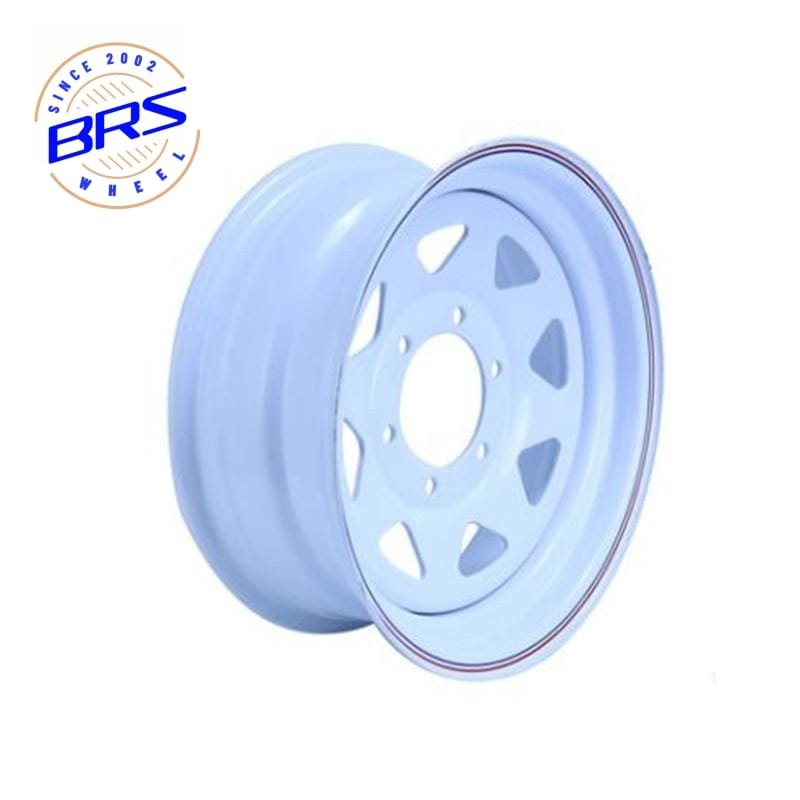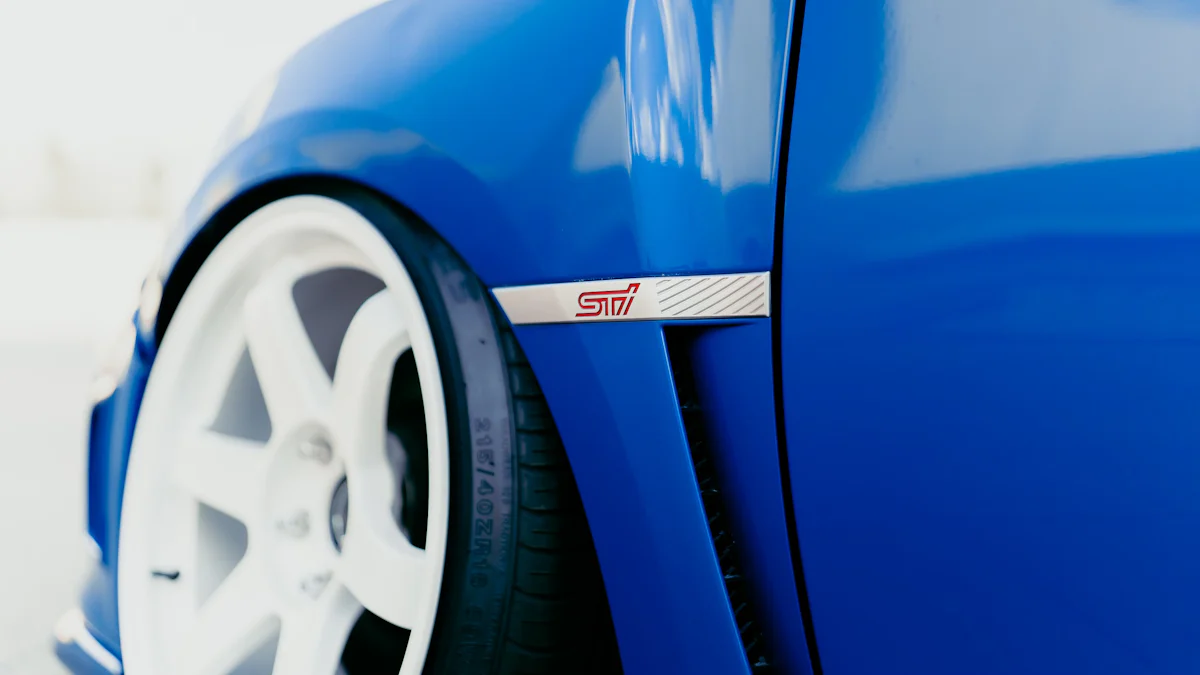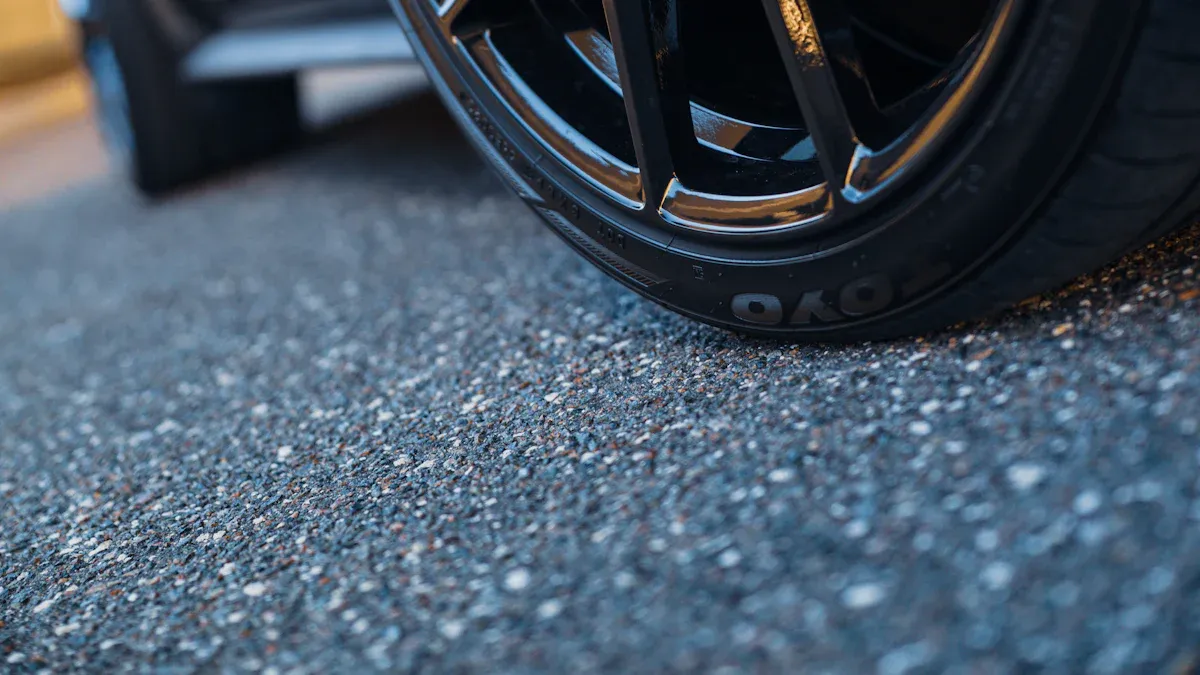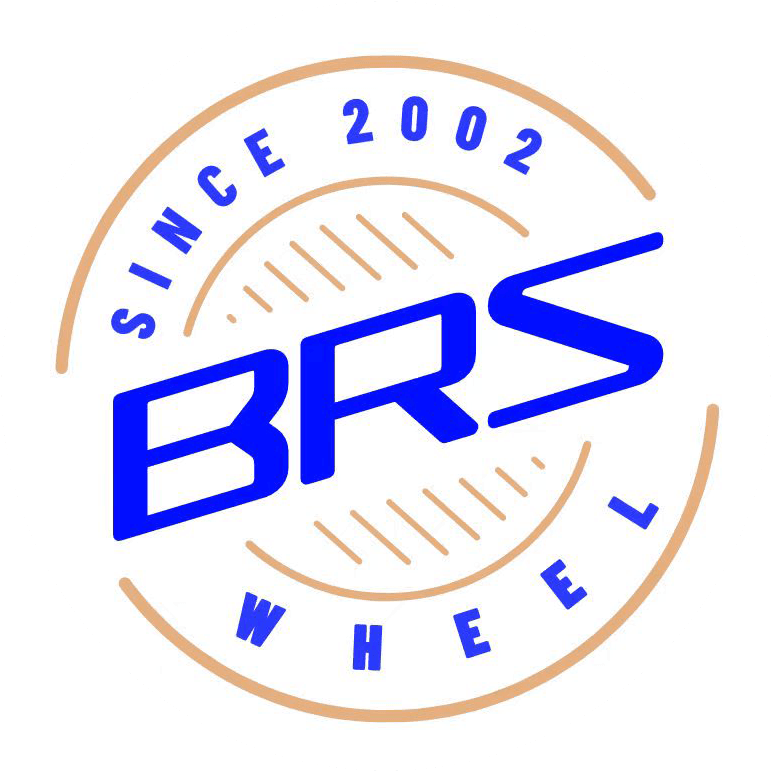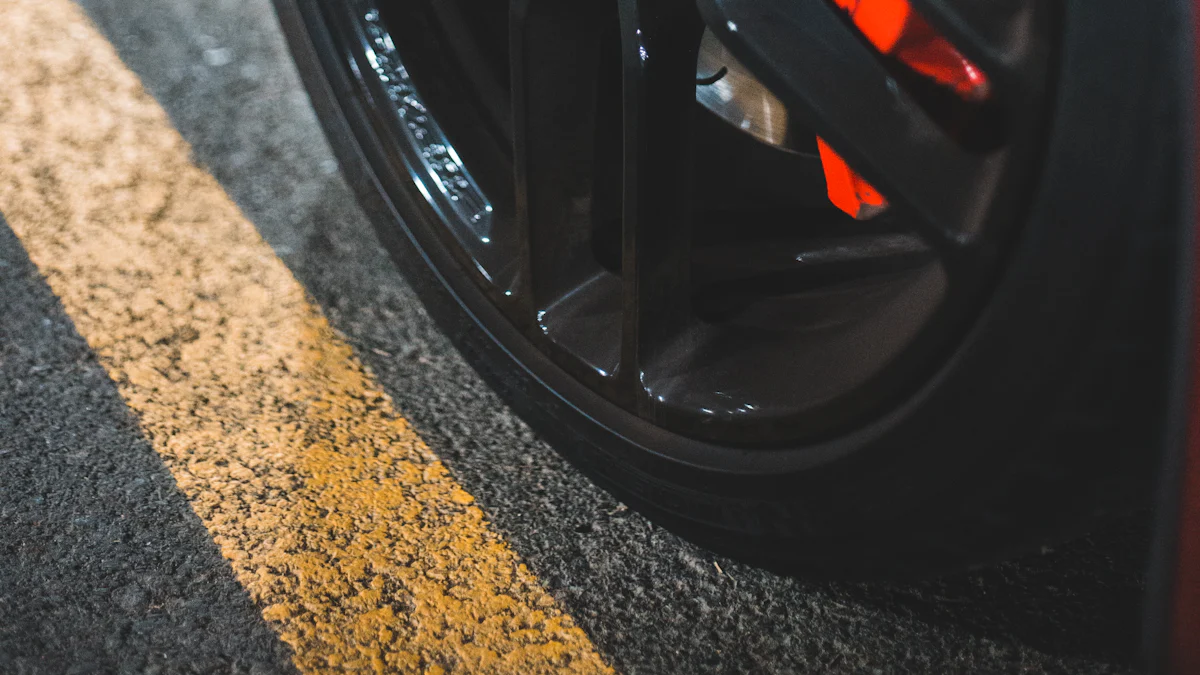
Choosing the right 16×10 steel rims impacts your vehicle’s performance, safety, and appearance. Wheels serve as the only connection between your car and the road, making their selection a critical decision. A well-chosen rim ensures stability, enhances handling, and supports the weight of your vehicle effectively. You must consider factors like size, compatibility, and durability to avoid compromising safety or performance. Properly matched rims not only improve functionality but also elevate the overall aesthetic appeal of your vehicle, giving it a bold and confident look.
Key Takeaways
- Choosing the right 16×10 steel rims enhances your vehicle’s performance, safety, and appearance.
- Steel rims are durable, affordable, and easier to repair than alloy rims, making them ideal for various driving conditions.
- Always verify the size, bolt pattern, and load capacity of rims to ensure compatibility with your vehicle.
- Regular maintenance, including cleaning and inspections, extends the lifespan of your steel rims and prevents safety issues.
- Consider the aesthetic appeal of rims, as a bold design can significantly enhance your vehicle’s overall look.
- For off-road or heavy-duty use, prioritize rims with higher load capacities to handle extra stress effectively.
Why Choose 16×10 Steel Rims?
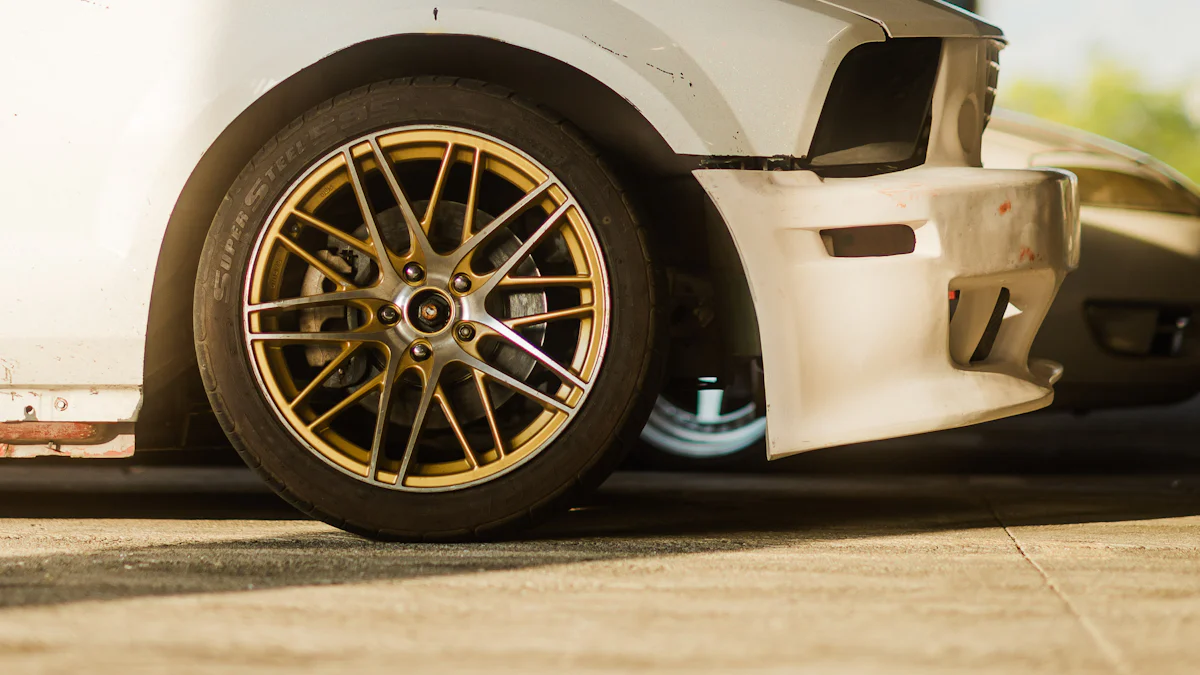
Choosing the right rims for your vehicle is a decision that impacts both performance and durability. 16×10 steel rims stand out as a reliable option for drivers seeking strength, affordability, and versatility. These rims are designed to handle demanding conditions while maintaining a sleek appearance. Whether you drive on rugged terrain or city roads, they offer a balance of functionality and style.
Advantages of Steel Rims
Steel rims provide several benefits that make them a popular choice among vehicle owners:
- Durability: Steel rims are known for their toughness. They can withstand harsh conditions, including off-road adventures and extreme weather. Their robust construction ensures they last longer than many other types of rims.
- Affordability: Compared to alloy rims, steel rims are more budget-friendly. They deliver excellent value without compromising on quality or performance.
- Ease of Repair: Steel rims are easier to repair if damaged. Unlike alloy rims, which may crack under pressure, steel rims bend instead. This makes them simpler and cheaper to fix.
- Weight Distribution: The heavier weight of steel rims contributes to better weight distribution. This enhances stability, especially in vehicles used for towing or carrying heavy loads.
Pro Comp Steel Wheels Series 252, for example, highlights the advantages of steel rims. These wheels feature thicker welds and tight tolerances, making them ideal for off-road use. Their tough build ensures they perform well in the harshest environments.
Features of 16×10 Steel Rims
The 16×10 steel rims offer specific features that cater to a variety of driving needs:
- Wide Dimensions: With a width of 10 inches, these rims provide a broader surface area. This improves traction and stability, especially when paired with wider tires. They are suitable for tire sizes ranging from 285 to 305, depending on your vehicle.
- Strength for Heavy-Duty Use: These rims are built to handle heavy loads. Their load capacity makes them a great choice for trucks, SUVs, and vehicles used for towing or off-road activities.
- Compatibility: The 16-inch diameter fits many vehicle models. Always check your vehicle’s specifications to ensure proper fitment.
- Aesthetic Appeal: The wider profile of 16×10 rims gives your vehicle a bold and aggressive look. This enhances its overall appearance, making it stand out on the road.
- Bolt Pattern Matching: These rims come with various bolt patterns to match different vehicle requirements. Ensuring the correct bolt pattern is crucial for a secure fit.
Steel rims like the Pro Comp Steel Wheels Series 252 combine these features with a sleek gloss black finish. This adds a touch of style while maintaining the ruggedness needed for challenging terrains.
Key Factors to Consider When Choosing 16×10 Steel Rims
When selecting the best 16×10 steel rims for your vehicle, you need to evaluate several critical factors. These considerations ensure that the rims not only fit your vehicle but also meet your performance and aesthetic expectations.
Size and Dimensions
The size and dimensions of the rims play a vital role in compatibility and performance. A 16×10 steel rim has a diameter of 16 inches and a width of 10 inches, making it suitable for wider tires. This width enhances traction and stability, especially for off-road or heavy-duty applications.
You should always verify that the rim size matches your vehicle’s specifications. The wrong size can lead to issues like poor handling, uneven tire wear, or even damage to the suspension system. For example, tires ranging from 285 to 305 are commonly paired with 16×10 rims, but this depends on your vehicle’s make and model. Check your vehicle manual or consult a professional to confirm the correct size.
Material and Build Quality
The material and build quality of the rims determine their durability and performance. Steel rims are known for their robust construction, which makes them ideal for demanding conditions. Unlike alloy rims, steel rims can withstand impacts without cracking. Instead, they bend, which is easier and cheaper to repair.
Steel rims also offer better weight distribution, which improves stability when towing or carrying heavy loads. However, they are heavier than alloy rims, which may slightly affect fuel efficiency and acceleration. If durability and cost-effectiveness are your priorities, steel rims are an excellent choice.
Did you know? Steel rims are often preferred for winter driving because their heavier weight provides better traction on icy roads.
Load Capacity and Weight Rating
Load capacity is another crucial factor to consider. The rims must support the weight of your vehicle, passengers, and cargo without compromising safety. 16×10 steel rims are designed for heavy-duty use, making them suitable for trucks, SUVs, and vehicles used for towing.
Always check the weight rating of the rims to ensure they meet your vehicle’s requirements. Overloading rims can lead to structural failure, posing a significant safety risk. Manufacturers typically provide load capacity information, so review these details carefully before making a purchase.
Tip: If you plan to use your vehicle for off-road adventures or heavy hauling, prioritize rims with higher load capacities to handle the extra stress.
Style and Aesthetics
The style and aesthetics of your rims significantly influence your vehicle’s overall appearance. Choosing 16×10 steel rims allows you to achieve a bold and aggressive look that stands out on the road. The wider profile of these rims enhances the visual appeal, especially when paired with larger tires. This combination creates a commanding presence, making your vehicle look more rugged and capable.
Steel rims often come in various finishes, such as matte black, gloss black, or silver. These finishes not only protect the rims from corrosion but also add a touch of sophistication to your vehicle. For example, a gloss black finish provides a sleek and modern appearance, while a matte black finish offers a more understated and rugged vibe. Selecting the right finish depends on your personal preference and the overall theme of your vehicle’s design.
Additionally, the bolt pattern and spoke design of steel rims contribute to their aesthetic value. Some rims feature intricate spoke patterns, while others have a simpler, more utilitarian design. If you prefer a minimalist look, opt for rims with fewer spokes. For a more dynamic and eye-catching style, choose rims with unique patterns or accents.
Tip: Consider how the rims will complement your vehicle’s color and body style. A well-matched rim design can elevate your vehicle’s appearance and make it truly unique.
Budget Considerations
Budget plays a crucial role when selecting rims for your vehicle. Steel rims are an excellent choice if you want durability and performance without overspending. Compared to alloy rims, steel rims are more affordable, making them a cost-effective option for many drivers. Their lower price point does not compromise quality, as they are built to withstand tough conditions and heavy use.
When planning your budget, consider not only the initial cost of the rims but also long-term expenses. Steel rims may require occasional maintenance, such as repainting or rust prevention, to keep them in top condition. However, their ease of repair and lower replacement costs make them a practical investment over time.
If you are comparing steel rims to alloy wheels, keep in mind that alloy wheels are lighter and may improve fuel efficiency and handling. However, they come at a higher price and are more prone to damage. Steel rims, on the other hand, offer better durability and are less expensive to repair if bent or damaged.
Did you know? Steel rims are often preferred for winter driving because their heavier weight provides better traction on icy roads, making them a smart choice for seasonal use.
To make the most of your budget, shop around and compare prices from different retailers. Look for promotions or discounts that can help you save money without compromising on quality. Investing in high-quality steel rims ensures you get the best value for your money while enhancing your vehicle’s performance and appearance.
How to Ensure Compatibility with Your Vehicle
Ensuring that your 16×10 steel rims are compatible with your vehicle is essential for safety, performance, and overall satisfaction. A mismatch can lead to handling issues, uneven tire wear, or even damage to your vehicle. Follow these steps to confirm compatibility and make an informed purchase.
Checking Vehicle Specifications
Start by reviewing your vehicle’s specifications. These details provide critical information about the size, bolt pattern, and offset required for your rims. You can typically find this information on a sticker inside the driver’s side door, on the glove compartment door, or in the trunk. The sticker lists the recommended rim size, tire size, and load capacity for your vehicle.
Pay close attention to the bolt pattern. This refers to the number of bolts and the diameter of the circle they form. For example, a 6×139.7 bolt pattern means six bolts arranged in a circle with a diameter of 139.7 millimeters. The bolt pattern of your rims must match your vehicle’s specifications to ensure a secure fit.
Tip: If you cannot locate the specifications, search for your vehicle’s make, model, and year online. Many manufacturers provide this information on their websites.
Consulting the Vehicle Manual or Manufacturer
Your vehicle manual is another reliable source for compatibility information. It includes detailed guidelines on the appropriate rim size, offset, and load rating for your vehicle. The manual also explains how these factors affect your vehicle’s performance and safety.
If you have questions or need clarification, contact the manufacturer or a trusted dealership. They can provide expert advice tailored to your specific vehicle. Manufacturers often maintain databases with precise compatibility details, ensuring you select rims that meet your vehicle’s requirements.
Did you know? Some manufacturers offer online tools where you can input your vehicle’s details to find compatible rims and tires.
Testing Fitment Before Purchase
Testing fitment is the final step to confirm compatibility. Visit a professional tire and wheel shop to test the rims on your vehicle before making a purchase. This process ensures that the rims fit securely and align properly with your vehicle’s suspension and braking systems.
During the fitment test, check for clearance issues. Ensure the rims do not interfere with the brake calipers, suspension components, or fenders. Also, verify that the rims sit flush against the hub and that the lug nuts tighten securely. A proper fit prevents vibrations, uneven tire wear, and potential safety hazards.
Pro Tip: If you plan to use wider tires with your 16×10 steel rims, ask the technician to check for additional modifications, such as lift kits or spacers, that may be necessary for proper clearance.
By following these steps, you can confidently choose rims that enhance your vehicle’s performance and appearance while maintaining safety and reliability.
Maintenance Tips for 16×10 Steel Rims
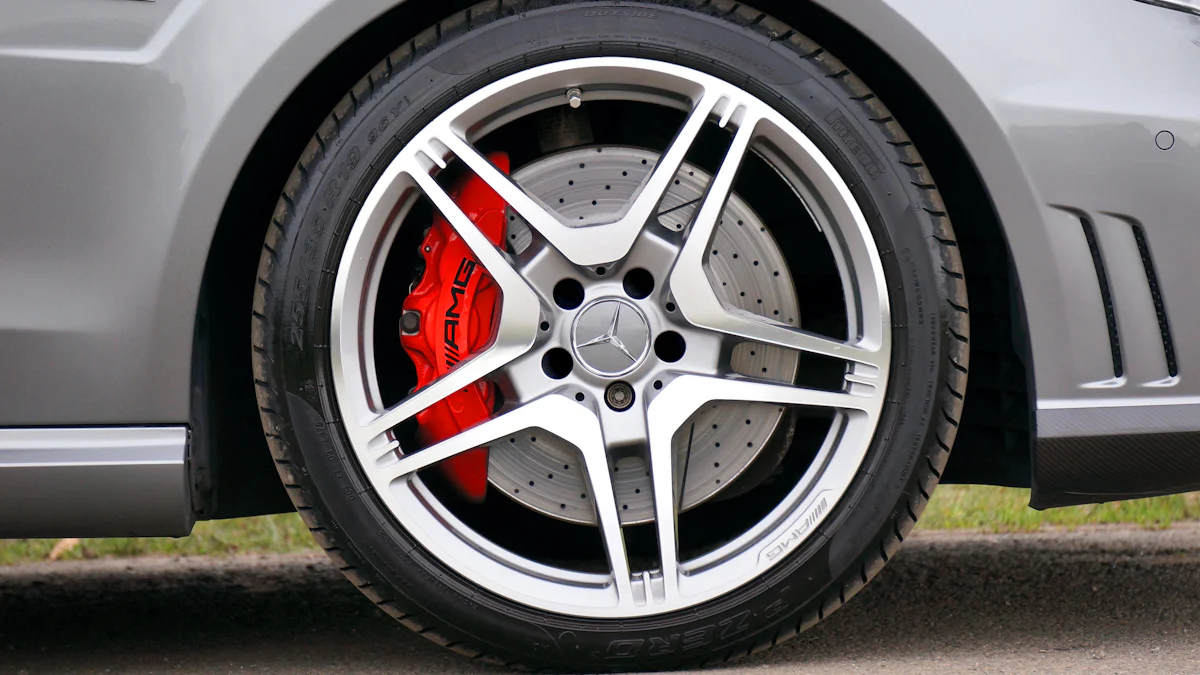
Proper maintenance of your 16×10 steel rims ensures their longevity and keeps your vehicle performing at its best. Regular care not only preserves the appearance of your rims but also prevents potential safety issues. Follow these essential tips to maintain your steel rims effectively.
Cleaning and Care
Keeping your steel rims clean is vital for maintaining their durability and appearance. Dirt, road salt, and debris can accumulate on the rims, leading to corrosion over time. Regular cleaning helps prevent rust and keeps your rims looking new.
- Use mild soap and water: Wash your rims with a soft cloth or sponge and a mixture of mild soap and water. Avoid harsh chemicals that can damage the protective coating.
- Scrub stubborn grime: For tough dirt or brake dust, use a soft-bristle brush to scrub the surface gently. Focus on crevices and hard-to-reach areas where grime tends to build up.
- Rinse thoroughly: After scrubbing, rinse the rims with clean water to remove all soap residue. Leaving soap behind can cause streaks or dull the finish.
- Dry completely: Use a microfiber towel to dry the rims thoroughly. Moisture left on the surface can lead to rust, especially in humid conditions.
Pro Tip: Apply a rim-specific wax or sealant after cleaning. This adds a protective layer, making it easier to clean the rims in the future and reducing the risk of corrosion.
Inspecting for Damage
Regular inspections help you identify potential issues before they become serious problems. Damaged rims can compromise your vehicle’s safety and performance, so it’s crucial to check them frequently.
- Look for rust or corrosion: Examine the surface of your rims for signs of rust or corrosion. Addressing these issues early prevents them from spreading and weakening the structure.
- Check for bends or dents: Inspect the rims for any bends, dents, or cracks. These can occur from hitting potholes, curbs, or other obstacles. Bent rims can affect tire alignment and lead to uneven wear.
- Examine the bolt holes: Ensure the bolt holes are not deformed or damaged. Properly fitting bolts are essential for keeping the rims securely attached to your vehicle.
- Test for balance: If you notice vibrations while driving, your rims may be unbalanced. Visit a professional to have them checked and balanced if necessary.
Did you know? Steel rims are more likely to bend than crack under pressure. This makes them easier and cheaper to repair compared to alloy rims.
Seasonal Maintenance
Seasonal changes can impact the condition of your steel rims, especially in regions with harsh winters or extreme weather. Adapting your maintenance routine to the season helps protect your rims from environmental damage.
- Winter care: Road salt and snow can accelerate rust formation. Wash your rims more frequently during winter to remove salt and prevent corrosion. Consider applying an anti-rust spray for added protection.
- Summer care: High temperatures can cause the metal to expand slightly. Inspect your rims for any signs of stress or damage caused by heat. Clean off any tar or sticky substances picked up from hot roads.
- Before long trips: Check your rims for damage or wear before embarking on long journeys. Ensuring they are in good condition reduces the risk of issues while driving.
- Storage tips: If you switch to winter or summer tires, store your steel rims in a cool, dry place. Clean them thoroughly before storage to prevent rust or dirt buildup.
Expert Advice: Vehicle experts recommend inspecting your rims at least once a month and after driving on rough terrain. Regular checks ensure your rims remain in top condition and safe for use.
By following these maintenance tips, you can extend the lifespan of your 16×10 steel rims and keep your vehicle running smoothly. Consistent care not only enhances the appearance of your rims but also ensures optimal performance and safety on the road.
FAQs
1. How should I clean my 16×10 steel rims?
To clean your steel rims effectively, use mild soap and water. Wash the rims with a soft cloth or sponge to remove dirt and grime. For stubborn debris, gently scrub with a soft-bristle brush. Rinse thoroughly with clean water to eliminate soap residue, then dry the rims completely using a microfiber towel. This prevents water spots and reduces the risk of rust. Avoid harsh cleaners or abrasive materials, as they can damage the protective coating on the rims.
Pro Tip: Applying a rim-specific wax or sealant after cleaning adds an extra layer of protection and makes future cleaning easier.
2. How can I prevent corrosion on my steel rims during harsh winters?
Winter conditions can accelerate rust formation due to road salt and moisture. To prevent corrosion, clean your rims frequently during the winter months. Wash off salt and debris using mild soap and water, then dry the rims thoroughly. Consider applying an anti-rust spray or protective coating for added defense against corrosion. Switching to winter tires can also help, as it reduces the exposure of your steel rims to harsh conditions.
Did you know? Regular maintenance during winter not only protects your rims but also enhances their lifespan and performance.
3. What tire sizes are compatible with 16×10 steel rims?
The 16×10 steel rims typically accommodate tire sizes ranging from 285 to 305. However, the exact size depends on your vehicle’s make and model. Always consult your vehicle manual or a professional to confirm the correct tire size. Using the wrong size can lead to poor handling, uneven tire wear, or damage to your suspension system.
4. Can I use 16×10 steel rims for off-road driving?
Yes, 16×10 steel rims are an excellent choice for off-road driving. Their robust construction and durability make them ideal for handling rugged terrains. The wider profile provides better traction and stability, especially when paired with off-road tires. Ensure the rims have the appropriate load capacity and bolt pattern for your vehicle to maximize safety and performance.
5. How do I know if 16×10 steel rims will fit my vehicle?
To ensure a proper fit, check your vehicle’s specifications. Look for details like rim size, bolt pattern, and offset on the sticker inside the driver’s side door or in the vehicle manual. You can also consult the manufacturer or a trusted retailer for compatibility information. Testing fitment at a professional tire shop before purchase is another reliable way to confirm the rims fit securely and align properly with your vehicle.
6. Are steel rims better than alloy rims?
Steel rims and alloy rims each have unique advantages. Steel rims are more durable, affordable, and easier to repair. They perform well in harsh conditions, making them suitable for off-road and heavy-duty applications. Alloy rims, on the other hand, are lighter and enhance fuel efficiency and handling. Your choice depends on your priorities, such as durability, cost, or performance.
Key Takeaway: If you value strength and affordability, steel rims are a practical option. For improved aesthetics and lighter weight, alloy rims may be a better fit.
7. How often should I inspect my steel rims?
Inspect your steel rims at least once a month and after driving on rough terrain. Look for signs of rust, bends, or damage. Check the bolt holes for deformation and ensure the rims remain balanced. Regular inspections help you identify potential issues early, ensuring your rims stay in top condition and safe for use.
Expert Advice: Address any damage immediately to prevent further complications and maintain optimal performance.
These FAQs address common concerns and provide actionable tips to help you make the most of your 16×10 steel rims. Proper care and informed decisions ensure your rims enhance your vehicle’s performance and appearance for years to come.
Choosing the right 16×10 steel rims offers numerous benefits for your vehicle. These rims enhance performance, ensure compatibility, and provide durability for various driving conditions. By selecting the correct size and design, you improve safety and achieve a bold, stylish appearance. Proper maintenance, such as regular cleaning and inspections, extends the lifespan of your rims and keeps them in optimal condition. For high-quality options, consult trusted retailers like BRS Auto Parts. Their expertise ensures you find rims that meet your needs and elevate your driving experience.
FAQ
1. How do I clean my 16×10 steel rims effectively?
Cleaning your steel rims regularly prevents dirt, grime, and road salt from causing corrosion. Use a soft cloth or sponge with mild soap and water to wash the rims. For stubborn debris, gently scrub with a soft-bristle brush. Rinse thoroughly with clean water to remove all residue, then dry the rims completely with a microfiber towel. This step ensures no moisture remains, which can lead to rust.
Expert Tip: Apply a rim-specific wax or sealant after cleaning. This protective layer makes future cleaning easier and helps prevent rust.
2. What should I do to protect my steel rims during winter?
Winter conditions can be harsh on steel rims due to road salt and chemicals. Clean your rims frequently to remove salt and debris. Dry them thoroughly after each wash to prevent moisture from causing rust. Consider applying an anti-rust spray or protective coating for added defense.
Expert Advice from a Car Maintenance Specialist: “If you live in an area with harsh winters, consider switching to winter tires. Salt and road chemicals can damage your wheels, so clean them thoroughly during the winter months to prevent corrosion.”
3. What tire sizes work best with 16×10 steel rims?
The 16×10 steel rims typically fit tire sizes ranging from 285 to 305. However, the exact size depends on your vehicle’s make and model. Always check your vehicle manual or consult a professional to confirm the correct tire size. Using the wrong size can lead to poor handling and uneven tire wear.
4. Can I use 16×10 steel rims for off-road driving?
Yes, 16×10 steel rims are an excellent choice for off-road driving. Their robust construction handles rugged terrains effectively. The wider profile improves traction and stability, especially when paired with off-road tires. Ensure the rims have the appropriate load capacity and bolt pattern for your vehicle to maximize safety and performance.
5. How do I know if 16×10 steel rims will fit my vehicle?
To ensure a proper fit, check your vehicle’s specifications. Look for details like rim size, bolt pattern, and offset on the sticker inside the driver’s side door or in the vehicle manual. You can also consult the manufacturer or a trusted retailer for compatibility information. Testing fitment at a professional tire shop before purchase is another reliable way to confirm the rims fit securely and align properly with your vehicle.
Pro Tip: During a fitment test, verify that the rims do not interfere with brake calipers, suspension components, or fenders.
6. Are steel rims better than alloy rims?
Steel rims and alloy rims each offer unique benefits. Steel rims are more durable, affordable, and easier to repair. They perform well in harsh conditions, making them ideal for off-road and heavy-duty use. Alloy rims, however, are lighter and enhance fuel efficiency and handling. Your choice depends on your priorities, such as durability, cost, or performance.
Key Takeaway: If you value strength and affordability, steel rims are a practical option. For improved aesthetics and lighter weight, alloy rims may be a better fit.
7. How often should I inspect my steel rims?
Inspect your steel rims at least once a month and after driving on rough terrain. Look for signs of rust, bends, or damage. Check the bolt holes for deformation and ensure the rims remain balanced. Regular inspections help you identify potential issues early, ensuring your rims stay in top condition and safe for use.
Expert Advice: Address any damage immediately to prevent further complications and maintain optimal performance.
8. What should I do if my steel rims get bent?
If your steel rims bend, take them to a professional for repair. Steel rims are easier to fix compared to alloy rims because they bend instead of cracking. A technician can reshape the rim to restore its functionality. Avoid driving on a bent rim, as it can cause uneven tire wear and affect handling.
9. Can I use 16×10 steel rims for towing heavy loads?
Yes, 16×10 steel rims are suitable for towing heavy loads. Their robust construction and weight distribution capabilities make them ideal for trucks, SUVs, and vehicles used for hauling. Always check the load capacity of the rims to ensure they meet your vehicle’s requirements. Overloading rims can lead to structural failure and safety risks.
10. How can I extend the lifespan of my steel rims?
To extend the lifespan of your steel rims, follow these steps:
- Clean them regularly to remove dirt, salt, and debris.
- Inspect them frequently for rust, bends, or damage.
- Apply a protective coating or anti-rust spray, especially during winter.
- Store them in a cool, dry place when not in use.
- Avoid overloading your vehicle to prevent unnecessary stress on the rims.
Pro Tip: Consistent maintenance not only enhances the appearance of your rims but also ensures optimal performance and safety on the road.
Related News
- Posted In:General
